All photos courtesy of Antioch Middle School staff
Antioch Middle School seventh-grader Alyssia Garcia was accustomed to scanning the cafeteria during lunch for kids who might need her assistance. “I’d look for kids who looked sad, kids who were sitting alone, kids who looked angry,” says Garcia, a peer advocate at her school.
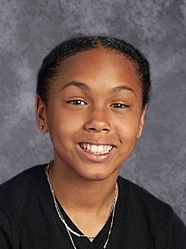
When she’d spot students sitting alone or looking sad, she’d approach them and ease into conversation. “If it’s a sad person, I’ll try to cheer them up or ask them what the problem is,” she says. “If it’s someone sitting alone, I’ll try to start up a conversation and ask them their name, or what class they have next.”
The peer program that Alyssia participates in is one of several designed to upend a school culture that existed when Lindsay Lopez-Wisely became principal of Antioch Middle School in Antioch, CA, four years ago. “We looked at the school discipline [data],” says Lopez-Wisely, “and Antioch had the highest number of suspensions [among elementary and middle schools in the district], lots of physical fights among students, and low performance academically.” The middle school has 860 students in sixth through eighth grades.

The programs Lopez-Wisely introduced include a restorative program, in which students who are at odds with one another work out their differences; the peer advocate program that Alyssia is part of; another peer program that trains eighth graders to orient sixth graders to middle school; a program that teaches the nuances of offering support to LGBTQ students; and 15-minute meditation sessions that the entire school participates in after lunch. In addition, last year the entire staff was trained in trauma-informed practices, based on ACEs science, where they learned to recognize when a student may be triggered into a “fight, flight or freeze” response, and were taught how to step in and help.
Adverse childhood experiences is a term that stems from the landmark Centers for Disease Control and Prevention/Kaiser Permanente Adverse Childhood Experiences Study (ACE Study) of 17,000 adults that found a relationship between 10 types of childhood traumas, such as any type of abuse or neglect, and adult-onset of chronic health conditions. Many other types of ACEs — including racism, bullying, a father being abused, and community violence — have been added to subsequent ACE surveys. (ACEs Science 101; Got Your ACE/Resilience Score?)
The ACE surveys — the epidemiology of childhood adversity — are one of five parts of ACEs science, which also includes how toxic stress from ACEs affects children’s brains, the short- and long-term health effects of toxic stress, how toxic stress is passed on from generation to generation, and research on resilience, which includes how individuals, organizations, systems and communities can integrate ACEs science to solve our most intractable problems. Research has shown how interventions, such as parenting education, family therapy and building resilience can offset the impact of toxic stress from ACEs.
The staff were also trained in equity and inclusion, and how to reflect on those values when addressing student behavior. The school also set up a wellness room, where students who were agitated or overwhelmed could calm down enough to return to class.
The programs had an impact. Since Lopez-Wisely became principal, suspensions dropped 45%, student fights dropped 45%, attendance was up slightly.
And then COVID-19 struck. Like schools all around the country, Antioch Middle School closed.
And Antioch Middle School was faced with a dilemma: How does a school that’s integrating trauma-informed practices based on ACEs science do so during a pandemic. Can trauma-informed practices migrate online?
Since March 13, the school has replaced in-person contact — where teachers and staff can witness students’ behavior, observe their moods, and direct them toward solutions or counseling — to a more virtual environment. In this new online environment, they buffer their students’ stress and build resilience by connecting with students via social media, video conferencing classes, one-on-one video counseling or chats with teachers, including old-fashioned telephone calls.
They’ve also taken the school’s wellness room online, where they attempt to duplicate, as much as possible, the experience of the brick-and-mortar wellness room. The actual physical space has a section where kids can work out their stress by playing with kinetic sand, squeezing stress balls, or coloring on paper. Another section has comfy chairs where students can meet with a counselor, and there’s a mindfulness area where they can be soothed by nature videos or listen to music or guided meditation. It drew 6,620 visits from students since it opened in February 2016.

The virtual counterpart has a welcome image of flowers and instructions of how to reach Miss C. (that’s Jennifer Covarrubias, the student support counselor who designed the brick and mortar wellness room) or a staff member, as well as hotlines for suicide prevention and for LGBTQ youth and a video about social distancing. And while they can’t offer kinetic sand, the virtual room provides an inexpensive recipe for making it — sand, dish soap, food coloring, and cornstarch. The room also has live webcams of mountains and an aquarium, and “if [students] are up in the middle of the night, they can see a webcam of a watering hole in Kenya,” says Vice Principal Stacy Southern, who created the online wellness room.
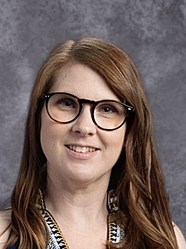
The online wellness room is even designed to be developmentally appropriate, says Southern. “All the menu items are on the top of the page, because middle schoolers don’t scroll down,” she explains as she walked me through the site. If students do bother to keep scrolling, on the bottom of every page they’ll see in bold letters, “We miss you!”
While the virtual wellness room may help reduce stress among some of the students — there have been around 335 unique visits since it went live — school staff are still trying to account for about five students they are unable to reach. Another 25 percent don’t show up for online classes regularly. It might be that they lack an Internet connection or that they have to share a computer with other siblings and haven’t been able to connect.
And there are other, less technological reasons. Melody Manning, for example, has discovered that some of her students are missing from her English literature classes because they’ve had to shoulder new responsibilities to help their families make ends meet, or they’re caring for younger siblings while their parents are working in jobs that don’t provide the luxury of remote work.
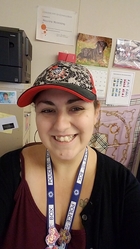
“One student has to babysit for the siblings while the parents work,” says Manning, “doing all of the caretaking, cooking, and cleaning.” Another student said he had to start working under-the-table to help pay for food since one of his parents doesn’t have a job anymore.
Indeed, the majority of the school’s students are eligible for the federal program that provides free and reduced-cost lunches, and now school administrators and staff are helping to link families with the White Pony food bank in Antioch, CA.
When Manning learned about trauma-informed practices with her fellow teachers last year, she said it confirmed for her that her approach to many interactions was on target, but it also gave her a new awareness and some new tools.
“Understanding why students act out in trauma situations, and the reason they’re doing certain things, took away 90 percent of the stress I was feeling,” she says. “Because if you don’t understand why, you can’t handle it.”
Some of those tools she’s been able to use in response to students triggered by the upheaval the pandemic has caused in their lives.
“I had one student who would text me, ‘This is giving me so much anxiety. I’m so scared! I want to go back to school!’” says Manning. “And I’d say, ‘Don’t worry! Hang in there. Are you safe?’ And we’d just chit chat, and she’d say thank you and she’d be fine the whole next day. And then she’d text me again the following night.”
To build the feeling of connection, Manning usually throws in a bit of humor: “I showed them a photo of a cat couch that I’m crocheting and said, ‘Come on, channel your inner old lady and crochet with me!,” which got the students laughing.
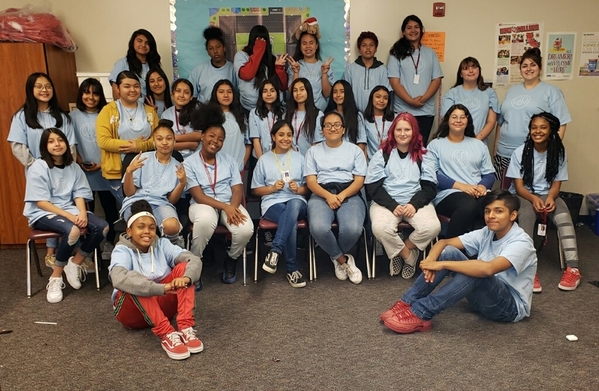
Garcia, the peer advocate, has also been using Instagram and SnapChat to check up on students. Most of them are ok, she says, except for one friend who she says is “super sad following the recent death of a cousin [not from COVID19],” she explains. But the regular contact seems to be helping: “The more I talk to them, the more I think they’re going to be able to get through it.”
Making contact and checking in with students is something physical education teacher Ashley Garcia also does.(As it happens, she's also Alyssia's elder sister.)
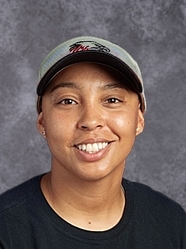
“Instead of focusing so much on [curriculum], we’re focusing on ‘Are you ok? Do you have what you need?’,” she explains. Garcia, who also teaches 8th graders leadership skills, has encouraged her students to practice mindfulness, praising them via Instagram for however long they’re able to do it. “I admit to them that I’m having trouble sitting still and ask them how long they think they can practice mindfulness. Some kids say, ‘I can probably go 15 seconds,’ or ‘I can probably go for a minute!’”
Figuring out ways of fostering connection during social isolation was one of the focuses of a recent ACEs Connection webinar among educators who have already practiced a trauma-informed approach. Jim Sporleder, the former principal of Lincoln High School in Walla Walla, Washington, whose work in transforming the school to a trauma-responsive environment was featured in the documentary Paper Tigers, shared a creative way one school was reaching out to students who seemed particularly distressed.
“They were sending their intervention specialists out to each house to meet in the driveway,” says Sporleder. “They were having a conversation to say ‘Hey, I just want to make sure you’re ok and to let you know we’re thinking about you and that we love you.’”
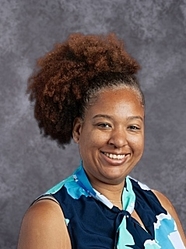
Antioch is also helping families having problems at home by using techniques that are similar to how they handled fights that broke out at school. Often when there were conflicts, parents would come in to school agitated and demand to talk to the other student’s parents. Prior to shifts to a practice known as restorative circles, Vice Prinicipal Taynesha LeBeaux says they’d talk to parents separately. “So we were kind of like the middle man,” she says.
Deb Hubbard, who facilitates restorative circle conversations, explains how those feelings shift when parents and the “harmer” and the “harmed” student talk it through, own up to transgressions, and offer solutions. A pivotal moment in that process, she says, is when the student that caused the harm looks the parents of the harmed student in the eyes and apologizes.
“When kids have to face the parent of the kids they’ve harmed,” says Hubbard, “that’s pretty intense, it takes a lot of courage. And the empathy in the room really rises.”
Now, Hubbard guides students on how to use empathy and affirmation in their own families. Among those are scripts she and a colleague created for families to use to hold family circles, talk about thankfulness and celebrate each member of the family.
“Because we know that when we’re trapped in the house with everybody, we can find faults with everybody,” she explains. And she’s replaced restorative circles with sharing circles to help the students connect with another. They even encourage students to bring their pets along: “If you have a pet, come to the pet sharing circle. And if you don’t, come and see everybody else’s.”
“I really think that the restorative and trauma-informed approach that we’ve taken over the last four years will pay off for us as we learn about distance learning,” says Lopez-Wisely. "Because we know it’s what the students need.”









Comments (0)